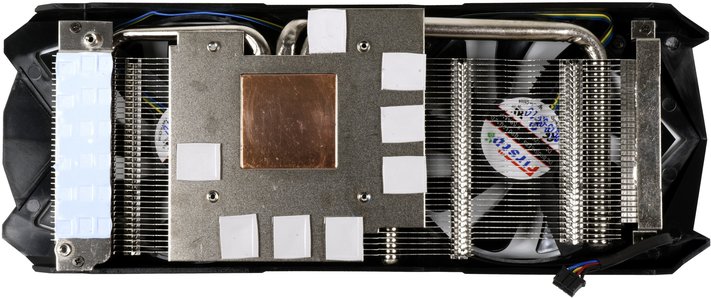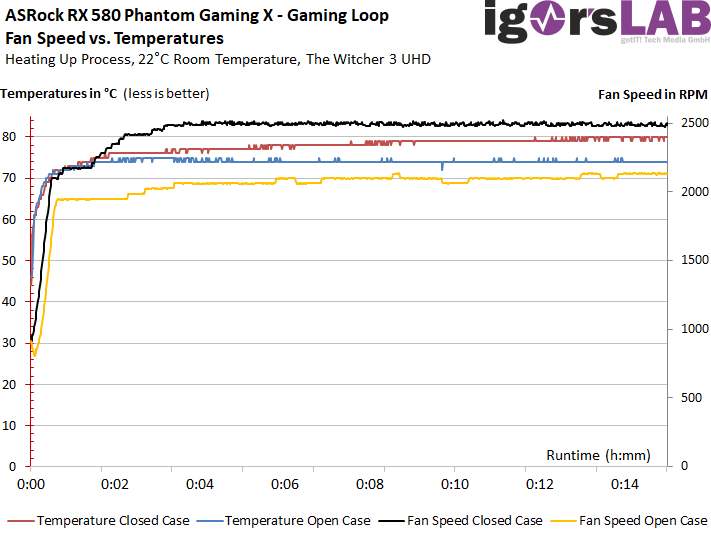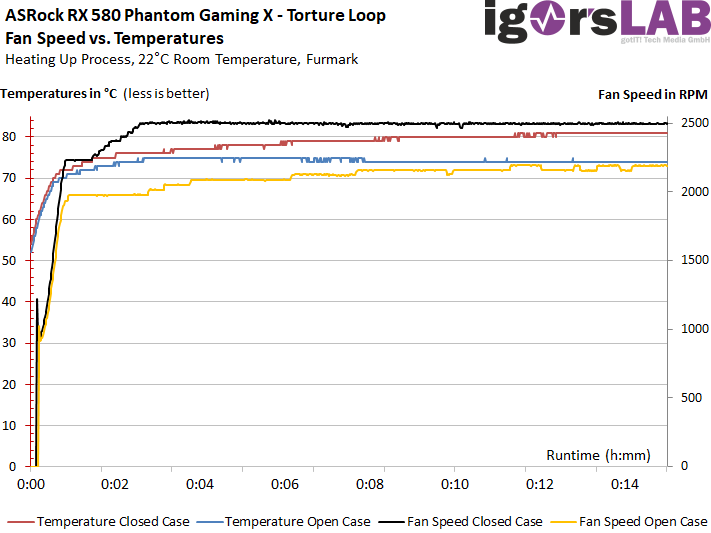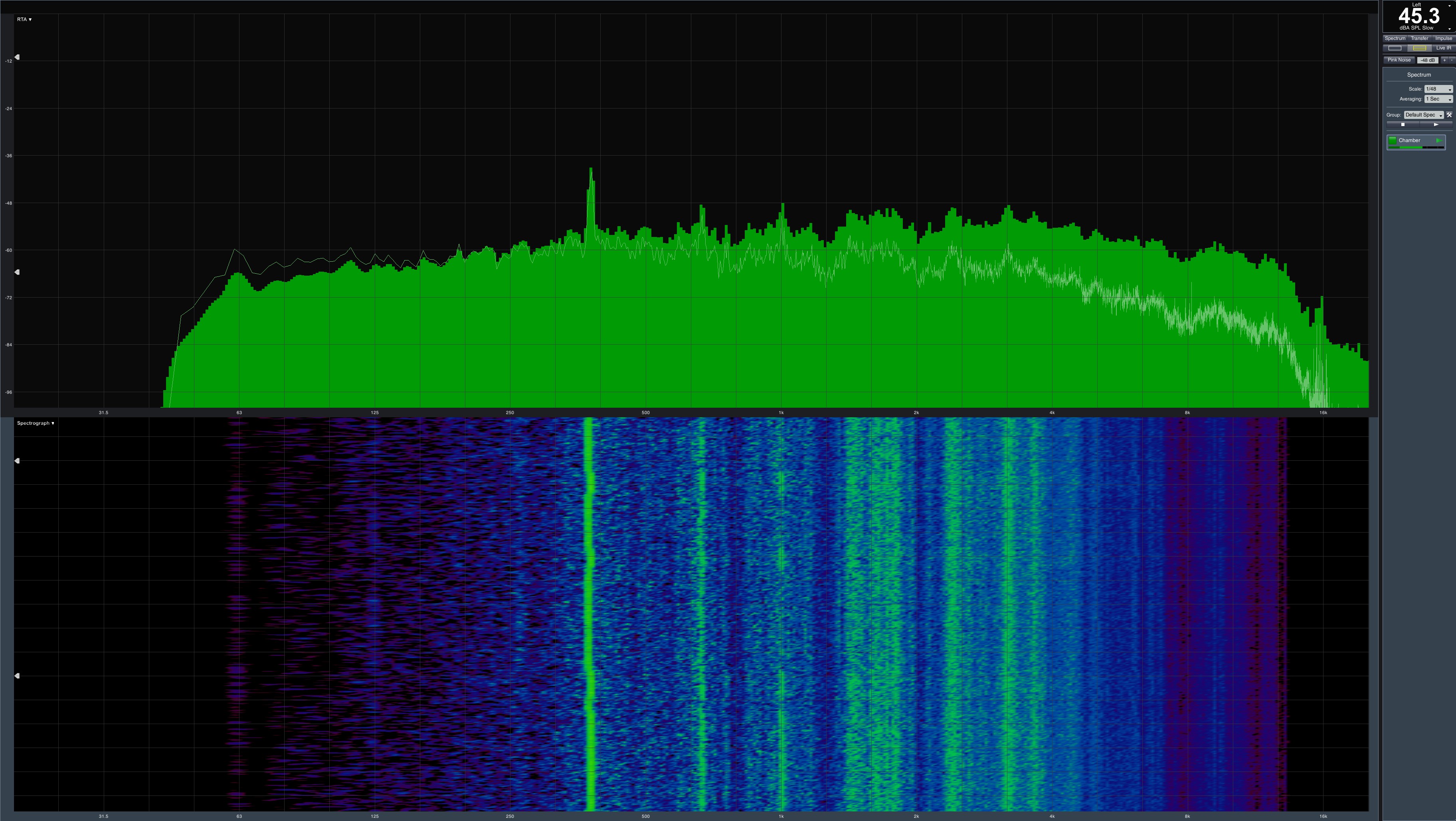Cooling
Of course, the generated waste heat is directly related to the recorded power, for which the cooling solution is responsible for optimum dissipation. ASRock has deliberately dispensed with a backplate, which in this case could not have fulfilled any meaningful functions besides optics. There is no more to write about, the cooling takes place from the front.
We see a smaller copper heat sink for the GPU, with the two 6mm and 8mm heatpipe made of nickel-plated composite material on the back. The actual radiator floor is made of aluminium and is also used to cool the memory modules by means of a thermal lypad.

What irritates us a bit is the direct connection of VRM heatsink and GPU heatsink using the one 6 mm heatpipe. Since the heatpipe is warmed up neatly at both ends, but nothing else can be dislocated in between, its efficiency is likely to be significantly lower than the actual possibilities. From a purely thermal point of view, this solution is actually pure nonsense.
The horizontally aligned cooling fins sit quite far apart, so that here a little more depth in the cooler and other fans with more turbulence would probably have been better. With static pressure alone, one achieves relatively little.
| Cooling system at a glance | |
|---|---|
| Type of cooler: | Air |
| GPU Cooling | Nickel-plated copper heat sink |
| Cooling fins: | Aluminum, horizontal alignment wide,not inclined |
| Heatpipes | 2x 6 mm, 1x 8mm nickel-plated copper composite |
| VRM cooling: | 6 GPU phases via an extra VRM heat sink in the cooler |
| RAM cooling | Storage cooling over radiator floor |
| Fan: | 2x 8.5 cm fan modules (8.7 cm opening), 9 rotor blades semi-passive regulation |
| Backplate | No |
Fan curves and noise emission (“volume”)
A semi-passive mode has not been dispensed with, which is also easily feasible at 12 watts in the idle. THE fan curve has chosen ASRock relatively conservatively. After a very short period of rather moderate cooling during the warm-up phase, the speeds later rise significantly above 50 degrees. We also clearly see how sensitive the card is to a closed housing. In order to keep the temperatures at the same level as possible, the fans in the closed housing must always rotate slightly higher when reaching the target temperature.

The whole thing doesn’t look much different with the stress test. In summary, it can be said that the card with the two fans is safe, but also requires significantly higher speeds in the closed body. Whether this remains quiet, we will see in a matter of one way.

By the way, the card has no reserves to make the fans rotate lower.
| Measurements for fans and noise emission |
|
|---|---|
| Fan speeds Open Benchtable Maximum |
2238 rpm (peak) |
| Fan speeds Open Benchtable Average |
2198 rpm (warmed up) |
| Fan Speeds Closed Case Maximum | 2522 rpm (peak) |
| Fan Speeds Closed Case Average | 2496 rpm (warmed up) |
| Noise Emission (Air) Average |
41.6 dBA (warmed up, Open Benchtable) 45.3 dBA (warmed up, closed case speeds) |
| Noise Emission (Air) Idle | 0 dB(A) |
| Sound characteristic / Hearing impression |
light bearing noise light engine noise< 1 Hz moderate air/demolition noise hardly any voltage transformer noises |
If the fan speeds are set to the speeds measured in the closed structure, then with the measured 45.3 dB(A) one skips the psychologically (and acoustically) so important limit of 40 dB(A) at a distance of 50 cm quite quickly. We have recreated this situation exactly and offer what is heard and measured in a high-resolution frequency spectrum for a better understanding:

One will certainly voluntarily pay attention to a good airflow in the housing, as this is easier to implement with quiet housing fans than to align the two slightly pretentious propellers of the graphics card to a different target temperature. But it certainly won’t get much quieter in sum.
- 1 - Einführung, Unboxing und technischen Daten
- 2 - Platinenlayout und Spannungsversorgung
- 3 - Gaming-Performance 1920 x 1080 Pixel (Full-HD)
- 4 - Gaming-Performance 2560 x 1440 Pixel (WQHD)
- 5 - Leistungsaufnahme im Detail
- 6 - Temperaturen, Taktraten und Wärmebildanalyse
- 7 - Kühlerdetails und Geräuschentwicklung
- 8 - Zusammenfassung und Fazit































Kommentieren